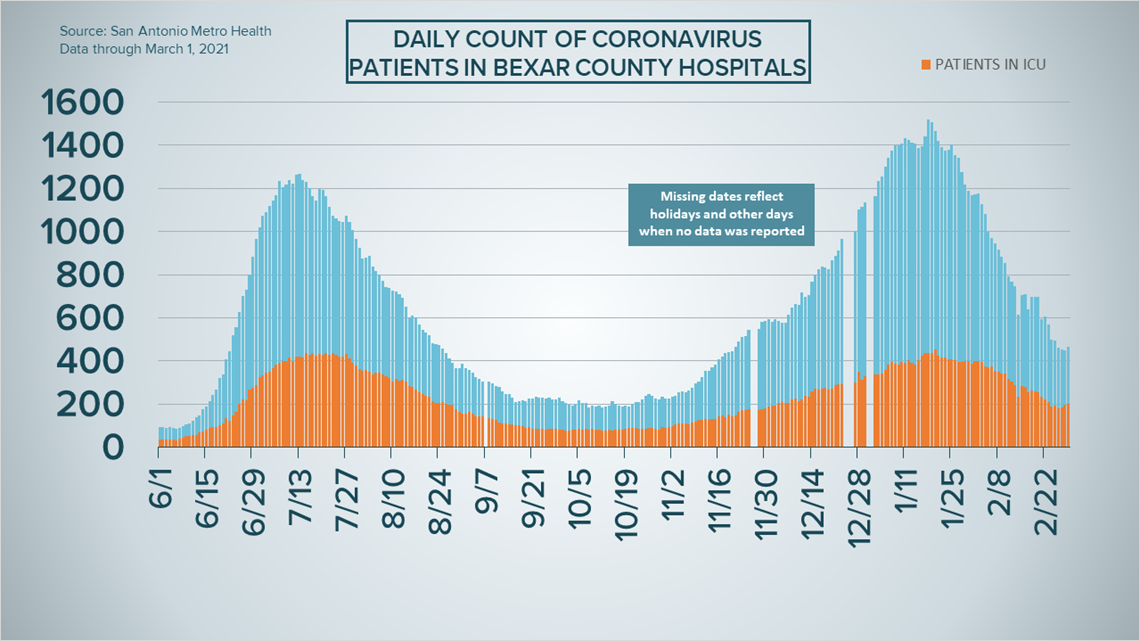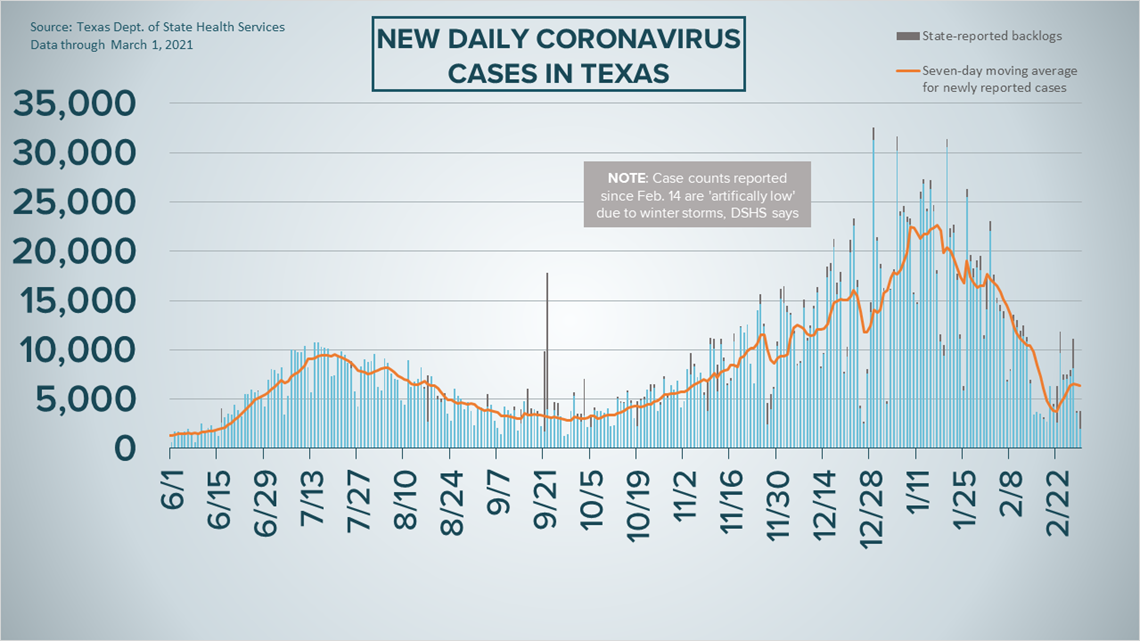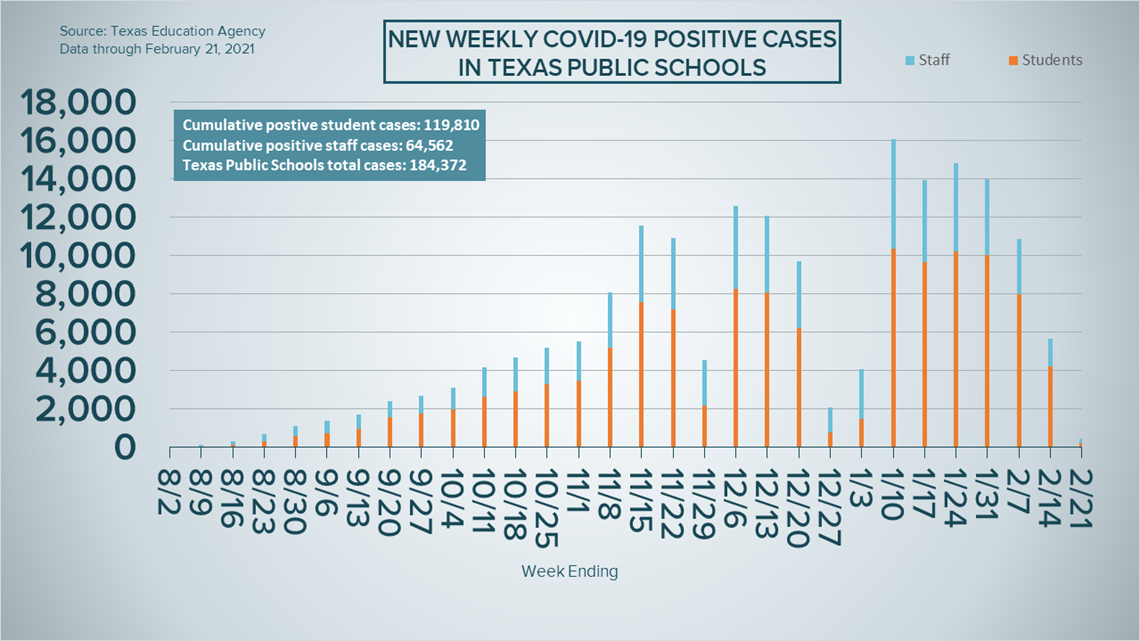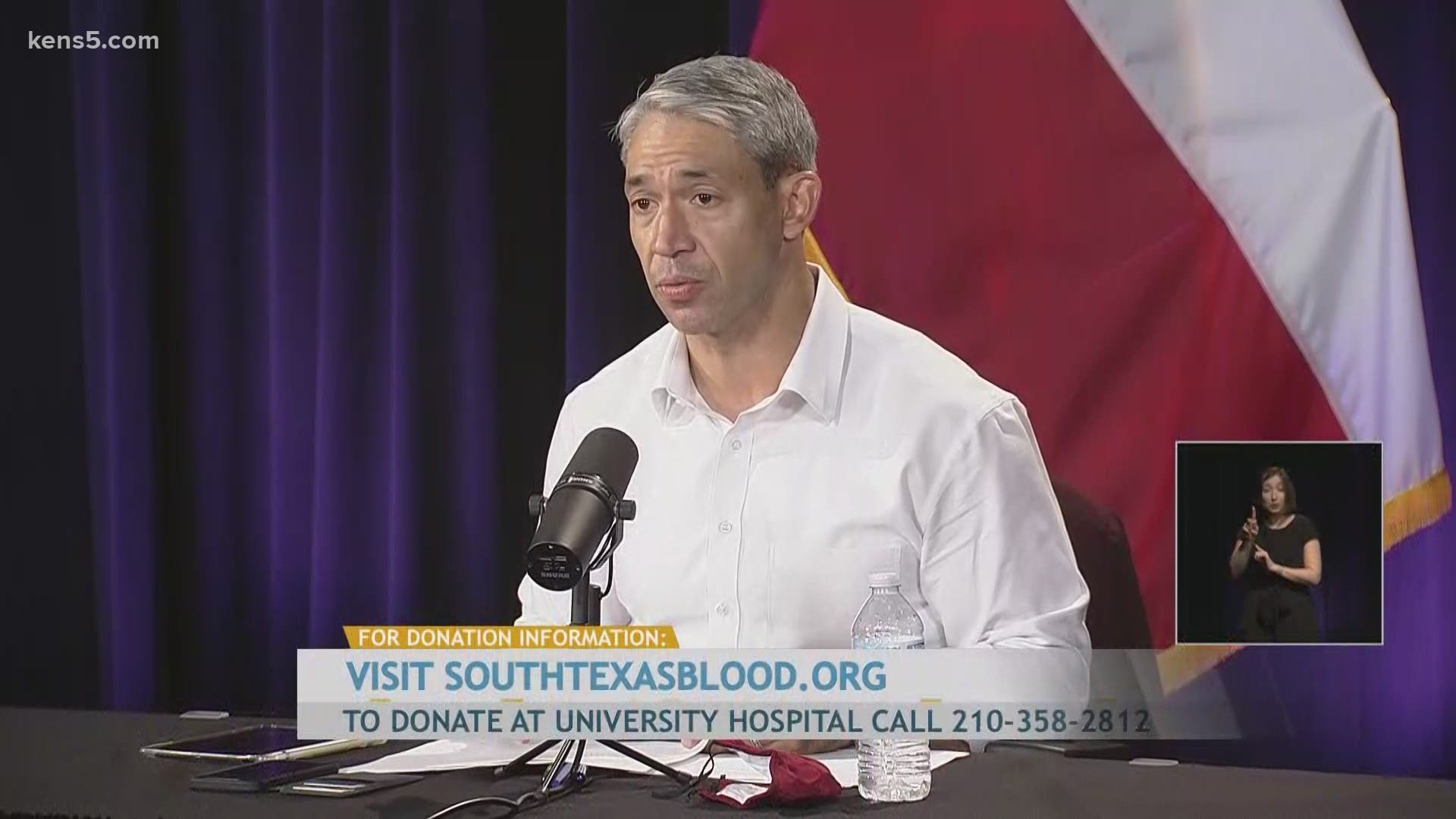SAN ANTONIO — We're tracking the latest numbers from the coronavirus pandemic in San Antonio and across Texas. Here are the latest numbers reported by Bexar and surrounding counties:
- Bexar County: On Monday, 288 new cases were reported, bringing the total number of cases to 196,816. No new deaths were reported, the local death toll from virus complications remains at 2,670.
- Hays County: On Monday, officials reported 75 new cases in the county and three additional COVID-related fatalities. There is now a total of 16,345 lab-confirmed local cases, while the death toll increased to 216. Officials estimate 15,619 residents have recovered, while 510 are still ill with the virus.
- Comal County: Officials reported 39 new cases and no additional COVID-related fatalities on Monday. As of Monday, 9,122 total COVID-19 cases have been reported, including 4,802 confirmed and 4,301 probable cases, while 292 county residents have died due to COVID-19 complications.
More county case information is available through the Texas Department of Health Services COVID-19 dashboard.
How Bexar County is trending
We've tracked how many coronavirus cases have been confirmed in Bexar County from the time officials began reporting cases in March 2020. The graphic below shows the number of cases since June and charts those daily case numbers along a 7-day moving average to provide a more accurate picture of the overall coronavirus case curve in our area and the direction we're trending amid the pandemic.
On Monday, Mayor Ron Nirenberg reported an additional 288 coronavirus cases in Bexar County, raising the local total to 196,816 since the pandemic began. Local authorities have yet to report a 7-day rolling average since last month's winter storms.


Nirenberg also reported no additional virus-related deaths. In all, 2,670 Bexar County residents have died from coronavirus complications.
39 new patients were admitted to Bexar County hospitals in the past day, as the number of concurrent hospitalizations rose slightly on Monday. In all, 464 COVID-19 patients are receiving treatment for their symptoms at local facilities, which is 17 more than Sunday.
Of those 464, 110 patients are on ventilators and 199 are in intensive care.


In its weekly update of the county's progress and warning indicators, Metro Health reported the local positivity rate had dropped by nearly two percentage points over the last seven days to 5.6%. Nirenberg noted that Bexar County's positivity rate is the lowest of Texas's metropolitan areas.
Monday also marked the 6th straight week where the positivity rate declined. It also marked the first time the local positivity rate was below the state's and the county's rate. Metro Health dropped the county's risk level to the mild, green zone.
Coronavirus in Texas
The total number of novel coronavirus cases in the state since the pandemic began grew by 3,821 on Monday, according to the Texas Department of State Health Services. That total includes 1,637 new confirmed cases, 344 new probable cases, and a backlog of 1,840 cases. More details can be found on this page.
Monday's figures bring the total number of Texans diagnosed with COVID-19 to more than 2.647 million.


Meanwhile, state health authorities reported an additional 59 deaths from coronavirus complications in Texas. In all, 42,995 Texans have died from COVID-19.
Texas hospitalizations continued to fall on Monday, the overall figure decreasing by 85 in the last day to 5,611 COVID-19 patients receiving treatment for their symptoms in the state.
The state, meanwhile, estimates that about 2.43 million Texans have recovered, while 156,989 Texans remain ill with COVID-19.
The latest update from the Texas Education Agency showed that there have been at least 184,372 cumulative cases among staff and students on Texas public school campuses through Feb. 21. That number comprises 119,810 positive student cases and 64,562 staff cases. More information can be found here.


The TEA typically releases new data on school cases on Fridays.
Latest Coronavirus Headlines
- VERIFY: Yes, this year's flu activity is far below average
- VERIFY: Current evidence suggests it's OK to breastfeed after COVID-19 vaccine
- WHO: It's 'premature,' 'unrealistic' to say COVID-19 will end soon
- Senate Democrats may change aspects of House-passed $1.9T relief aid
- Countries urge drug companies to share vaccine know-how
- Students ace mask designing challenge | Kids Who Make San Antonio Great
- Health experts, county officials weigh in on possible end to Texas COVID-19 restrictions
Coronavirus symptoms
The symptoms of coronavirus can be similar to the flu or a bad cold. Symptoms include fever or chills, cough, shortness of breath or difficulty breathing, fatigue, muscle or body aches, headache, new loss of taste or smell sore throat, congestion or runny nose, nausea or vomiting, and diarrhea, according to the Centers for Disease Control.
Most healthy people will have mild symptoms. A study of more than 72,000 patients by the Centers for Disease Control in China showed 80 percent of the cases there were mild.
But infections can cause pneumonia, severe acute respiratory syndrome, kidney failure, and even death, according to the World Health Organization. Older people with underlying health conditions are most at risk.
Experts determined there was consistent evidence these conditions increase a person's risk, regardless of age:
- Chronic kidney disease
- COPD (chronic obstructive pulmonary disease)
- Obesity (BMI of 30 or higher)
- Immunocompromised state (weakened immune system) from solid organ transplant
- Serious heart conditions, such as heart failure, coronary artery disease, or cardiomyopathies
- Sickle cell disease
- Type 2 diabetes
The CDC believes symptoms may appear anywhere from two to 14 days after being exposed.
Human coronaviruses are usually spread...
- Between people who are in close contact with one another (within about 6 feet).
- Through respiratory droplets produced when an infected person coughs, sneezes or talks. These droplets can land in the mouths or noses of people who are nearby or possibly be inhaled into the lungs.
- Some recent studies have suggested that COVID-19 may be spread by people who are not showing symptoms.
Help stop the spread of coronavirus
- Stay home when you are sick.
- Eat and sleep separately from your family members
- Use different utensils and dishes
- Cover your cough or sneeze with your arm, not your hand.
- If you use a tissue, throw it in the trash.
Find a Testing Location
City officials recommend getting a COVID-19 test if you experience fever or chills, cough, shortness of breath or difficulty breathing, fatigue, muscle or body aches, headache, new loss of taste or smell, sore throat, congestion or runny nose, nausea or vomiting, or diarrhea.
A self-screening tool is available to see if you need a test.
Here's a Testing Sites Locator to help you find the testing location closest to you in San Antonio.

